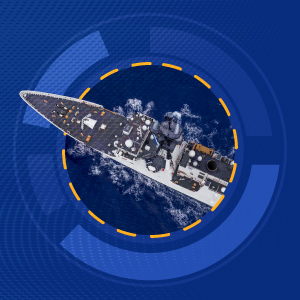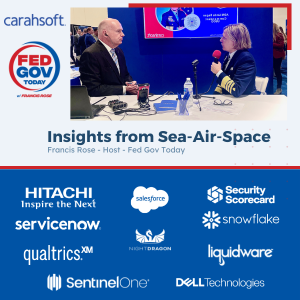In the 21st century, technological security remains one of the most important features of any government agency. Military officials, Government leaders and industry professionals gathered at AFCEA’s WEST 2023, an annual and international Sea Services conference, to discuss the future of security and naval technology in the federal government. This year’s conference featured the Departments of the Navy, the Marine Corps and the US Coast Guard (USCG). At WEST, agencies showcased and reviewed IT initiatives and programs in the context of meeting the needs of the Sea Services.
Opportunities for the USMC
US Marine Corps (USMC) is an amphibious force that engages enemy forces, protects U.S. naval bases, combines armed service with their fleet and responds to global crises.
At WEST, the USMC elaborated on various steps to opportunities to ensure readiness to respond to various threats and challenges. It has:
- Extended the MQ-9 flying range
- Gained new approvals for bases
- Increased funding for various subsets
- Focused on retaining recruits
During the upcoming year, it aims to:
- Obtain a minimum of 31 amphibious warships
- Provide training in realistic conditions
- Explore expeditionary contracting and pre-positioning
- Secure continued support from Congress
- Improve cybersecurity
- Acquire more personnel
IT professionals from both industry and other government agencies can collaborate with the USMC to help it effectively meet these goals.
 How DISA IT Initiatives Support the USMC
How DISA IT Initiatives Support the USMC
The Defense Information Systems Agency (DISA) is a United States Department of Defense (DoD) combat support agency that provides information technology (IT) and communications support to public officials. When creating security solutions for the USMC, DISA incorporates a variety of helpful features including having all migration efforts interoperable with Zero Trust best practices. This is especially important to gaining continued federal support, as Zero Trust is a vital security model in the federal government.
Over the last year, the pilot for Thunderdome, DISA’s application of the zero trust security model, came to fruition. While its implementation has been difficult, DISA hopes to use Thunderdome to improve the lack of endpoint credential solutions in the DoD by employing conditional access policies and application security stack requirements. Additionally, DISA plans to implement SOAR—Security, Orchestration and Automated Responses—solutions and tools to streamline security operations. Other similar security efforts include automating security validation, implementing endpoint management and advancing micro-segmentation. DISA plans to add multipurpose team collaboration and management tools that can fulfill multiple tasks at once. By channeling increased funding into these initiatives, the USMC can solidify its technological security.
Industry Professionals Driving Innovation
The Navy, and by extension, the USMC, have three main goals in the upcoming year: modernize the department of infrastructure, drive innovation and become more competitive. The tech industry can help the USMC achieve these goals through various technological advancements.
For example, transforming cybersecurity to be rooted in military readiness can help improve the USMC’s defense, speed capability delivery and insights. Quicker capabilities are especially helpful to its goal of acquiring more warships and shifting back to a focus on maritime services. Additionally, USMC must work with agencies that maintain its own Software-as-a-Service (SaaS) tools to implement additional agile tools that can expedite processes, freeing funding for other projects. Other initiatives are to expand the department’s satellite network capabilities beyond sole usage of the cloud, to enable the USMC to access toolkits from multiple systems and to advance internal innovation. These capabilities can help create comprehensive growth in the Navy.
Through a variety of security implementations, government agencies and the IT sector can work together to make the USMC, Navy and Coast Guard as safe and effective as possible. With continued and future partnerships between the government and technology industry, the Sea Services hope to achieve long-term support that will drive fundamental and vital development.
To learn more about AFCEA’s West 2023, visit Carahsoft’s Partners and Events Resource Hub.
*The information contained in this blog has been written based off the thought-leadership discussions presented by speakers at WEST 2023.*
 Sea Service chiefs attending the conference noted that currently, maintaining and developing the workforce is a high priority for the military as it emphasizes the role of people as resources. Defense agencies are looking to engage young, talented individuals interested in serving the armed forces.
Sea Service chiefs attending the conference noted that currently, maintaining and developing the workforce is a high priority for the military as it emphasizes the role of people as resources. Defense agencies are looking to engage young, talented individuals interested in serving the armed forces.
 How DISA IT Initiatives Support the USMC
How DISA IT Initiatives Support the USMC